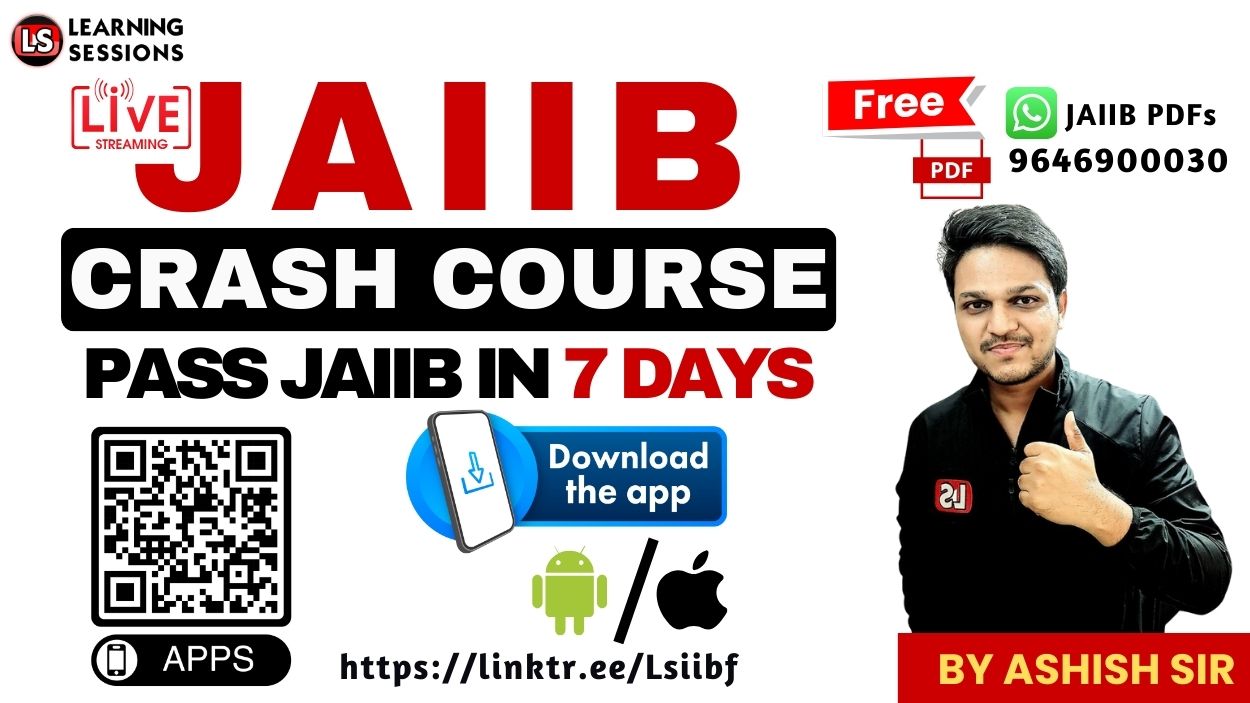Do you think businesses run only on bank loans?
If yes, then today’s session will change your perspective! 🤯
In today’s time, businesses can’t depend only on banks for funding – now is the time of Alternative Sources of Funding. If you’re preparing for the CCP Exam 2025, or you’re a banking/finance enthusiast, this video is a must-watch.
This session covers in a clear and practical way:
- 4 types of Crowdfunding
- Angel Funding vs Venture Capital
- Invoice Factoring with real examples
- Peer-to-Peer Lending, Debentures, Commercial Papers
- Alternative Investment Funds (AIFs) and External Commercial Borrowings (ECBs)
👥 This video is helpful for:
- Candidates preparing for CCP, JAIIB or CAIIB exams
- Finance students and professionals
- Anyone who wants to understand how modern funding options work
📢 So don’t skip – watch the full video and share in the comments what you found most useful!
👉 Before we dive in, please watch this video for full understanding:
⏱️ TIMESTAMP-WISE STRUCTURED BLOG BODY
⏰ 00:00 – What is Alternative Funding?
Let’s start with the meaning of ‘funding source’ and why businesses today need options beyond traditional banks.
⏰ 02:06 – 4 Main Types of Alternative Funding
- Crowdfunding
- Angel Funding
- Private Equity
- Venture Capital
📌 Crowdfunding
Raising funds from a large number of people online. Common types:
- Reward-based: Product or discount in return
- Donation-based: No return expected
- Debt-based: Loan repayment with interest
- Equity-based: Company shares are given to investors
👼 Angel Funding
High-net-worth individuals invest in startups or small businesses in exchange for equity. Many times, these are friends, relatives or wealthy professionals interested in innovation.
💰 Private Equity
Buying large stakes in private companies – gives ownership and control. Used for growth or takeover purposes.
🚀 Venture Capital
A form of private equity, where funds are given to early-stage businesses with high growth potential. Funding stages include Seed, Series A, B, and so on.
📄 Invoice Factoring
Company sells its unpaid invoices to a third-party (factor) to get immediate funds. In India, TReDS platform helps MSMEs connect with financers for invoice discounting.
👥 Peer-to-Peer Lending (P2P)
Loans are directly arranged between investors and borrowers via online platforms – no banks involved. Fully regulated by RBI.
📘 Debentures
- Redeemable: Repaid after fixed term
- Perpetual: No maturity date
- Convertible: Can be converted into equity shares
- Registered/Bearer: Traded with or without name on document
🔁 Non-Convertible Debentures (NCDs)
Issued for short term, usually privately placed. Tenure ranges from 90 days to 1 year, minimum rating A2 is required.
📄 Commercial Paper (CP)
Unsecured debt instrument issued by companies with high credit rating, usually for 7 days to 1 year. Issued at discount and redeemed at face value.
📊 Alternative Investment Funds (AIFs)
SEBI-approved investment vehicles which pool funds from investors for specific purposes. Types:
- Category I: Startups, SMEs, Social Impact
- Category II: Real Estate, Private Equity
- Category III: Hedge Funds and High-risk trading
🎯 Fund of Funds (FoFs)
When one fund invests in another fund. Reduces individual exposure and brings in expert fund management.
[FREE EPDF] Certified Credit Professional | Chapter 19 | Module D | IIBF
🌍 External Commercial Borrowings (ECB) for Startups
- Indian startups borrow funds from recognised foreign entities
- Maximum limit: USD 3 million per financial year
- Can be raised in foreign currency, INR or a mix of both
- Permitted to convert into equity under certain conditions
📥 Download PDF Notes for Quick Revision
📎 Click Here to Download the Full PDF Notes of this Session
🔚 Conclusion
So friends, as we’ve seen today – startups and businesses are no longer dependent only on banks. Modern alternative funding sources offer flexibility, faster access, and better alignment with business goals.
Key takeaway: Choose your funding method wisely – whether crowdfunding, angel funding, or venture capital – depending on your business needs.
If you found this helpful, do leave a comment below, share this with your friends and colleagues, and don’t forget to:
- ✅ Subscribe to our YouTube Channel
- 🔔 Click the bell icon for updates
- 📱 Download our app – “Learning Sessions – IIBF Exams”
Also Like:







